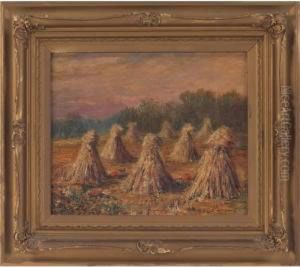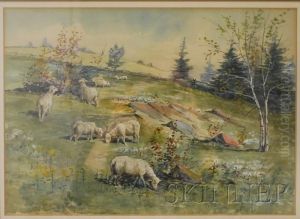Albert Melville Graves Paintings
Albert Melville Graves was born in 1856, in a period characterized by significant transformations in the art world. Not as widely recognized as some of his contemporaries, Graves carved a niche for himself through his distinctive approach to painting and illustration. Over the course of his long life, he witnessed the transitions from Romanticism to Realism, and into the burgeoning movements of Impressionism and Modernism, though he maintained a unique stance that did not strictly adhere to the principles of these movements.
Graves' artistic journey was marked by a dedication to capturing the essence of his subjects with a keen eye for detail and a soft, evocative use of color that suggested rather than defined forms. His works often depicted landscapes, seascapes, and occasionally, scenes of daily life, rendered with a sensitivity that suggested a deep connection to his subjects. Unlike the Impressionists, who sought to capture the fleeting effects of light and color, Graves' approach was more deliberate, seeking to uncover the timeless beauty in his vistas and vignettes.
Throughout his career, Graves remained relatively independent of the major art movements of the time. Instead, he focused on developing his personal style, which resonated with a select group of patrons and admirers. His works were exhibited in various galleries, though he never gained the kind of widespread acclaim that some of his peers achieved. Despite this, his dedication to his craft and his ability to evoke emotion through his paintings earned him a respected place among the artists of his time.
Graves lived until the ripe age of 94, passing away in 1950. Over his nearly century-long life, he witnessed incredible changes in the world and in the art world. His body of work serves as a testament to his passion for beauty and his commitment to exploring the possibilities of paint. Though not as celebrated as some of his contemporaries, Albert Melville Graves' legacy is preserved in the quiet beauty of his paintings, which continue to captivate those who encounter them. His contributions to the art world may be understated, but they are nonetheless a valuable part of the tapestry of art history.


